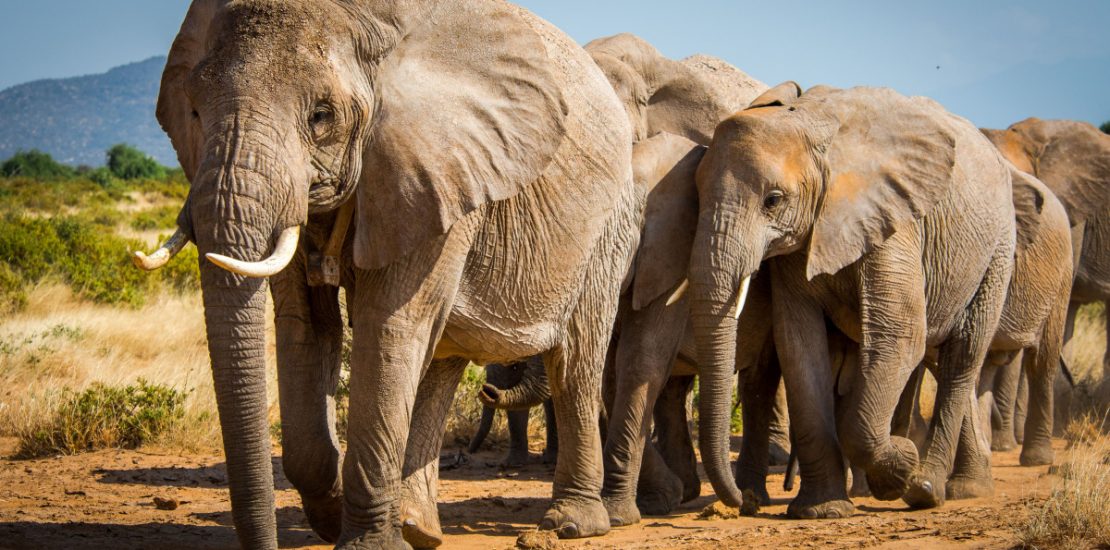- April 17, 2021
- Posted by: Administrator2
- Categories: African safari destinations, Uganda News, Wildlife News, Wildlife safaris

SOCIAL HERBIVORES
The African elephant species of the forest elephants and savannah elephants get new positions on the IUCN red list; as critically endangered and endangered respectively. The formerly singly identified species of the African elephant were once listed as endangered species. Due to the research taken concerning these species, these were separately identified on the new red list of threatened species.
The international union of conservation of nature is an international body composed of civil society organizations and government bodies. The organization does most of its analysis through collaborating with on-ground bodies in field projects, education, research, and data gathering,
These African elephant species has two subspecies of the African forest elephant and the African savannah elephant
The African forest elephant with the scientific name of (loxodonta cyclotis), is among the only two species of African elephants. The African forest elephant is native to the Congo basin and West Africa.
With a shoulder height of 2.4 meters, the African forest elephant is the smallest elephant specie among the other species. This species feeds on the forest’s produce of fruits, leaves, and tree bark refereeing to it as a mega gardener. The African forest elephant was listed as critically endangered on the new red list of threatened species.
These African savannah elephants (loxodonta Africana) are the largest terrestrial mammal; with a shoulder height of 3.96 meters, with a body mass of 10.4 tons. The African savannah or (bush) elephant is home in about 37 African countries. Its habitats are forests, woodlands, wetlands, and grasslands.
The African elephants have been threatened by several factors that have led to their decreased population numbers for both species. On 25 march 2021 Gland Switzerland, the IUCN highlighted new positions for different species on their red list; threatened species.
THREATS TO THE AFRICAN ELEPHANT
The assessment of species leading to the new-level of the African elephant species provided that, there is a population decline. The African elephant species are majorly threatened by poaching. It was provided that the practice of poaching led to the sharp decline of the elephant species since 2008. This record peaked in 2011.
Dr. Bruno Oberle, IUCN Director General said; “We must urgently put an end to poaching and ensure that sufficient suitable habitat for both forest and savanna elephants is conserved”. This statement was made at the meeting of the ICUN that confirmed the grief caused by poaching. Poaching threatens the lives and population of the African elephant species.
Habitat loss for land use and agricultural purposes is another threat to the African forest elephants and African savannah elephants. The increased human population has led to the increased demand for land use, for either settlement or commercial purposes; agricultural production. This has led to the displacement of the African elephant species and exposure to threats hence population reduction.
Through the assessment of the African Elephant species, a population decrease of 60% was recorded over the last 50 years. For the African forest elephants, these decreased by 86% over 31 years.
Despite the decreased numbers in the population of the African elephant species. There has been a silver lining in the conservation of the species. Anti-poaching measures across the world have helped to fight the poaching practice. Encouragement of human-wildlife co-existence among communities has also helped to reduce the threat on both sides. Showing the local communities, the real wildlife benefits has helped to twist their perception of the wildlife’s existence. In the end both people and wildlife benefit.
Going Forward…
Effective conservation efforts have helped in maintaining and growing the population of the African elephant species. From the IUCN assessment in Gabon and Congo, the African forest elephants have been well conserved and protected through well-established conservation areas.
In Uganda, the African forest elephants are found in these protected areas; Bwindi impenetrable national park, Kibale national park, and Mgahinga national park. All these national parks are located in the western region of the country. Despite these national parks being well known for habiting primates, the African elephant species can be sighted from these areas.
The African bush elephants on the other side are located in the savannah parks of Uganda. These include Queen Elizabeth national park, Kidepo valley national park and Murchison falls national park.
Both threatened species can be sighted while on an Uganda wildlife safari in the various protected areas. These African species are also well protected and conserved by the various regulatory bodies. Legislation and strict have been established in Uganda foresting the conservation and protection of the African elephant species in Uganda.
We organize both scheduled and tailor-made safari trips in East Africa, including Uganda, Rwanda, Kenya, Tanzania, DRC, and Burundi.
Leave a Reply
You must be logged in to post a comment.
